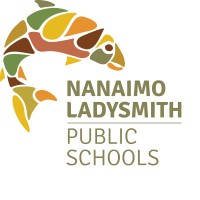Rachelle Stein-Wotten
Local Journalism Initiative Reporter, Gabriola Sounder
School trustees approved a public consultation process to address the capacity conundrum at Nanaimo District Secondary School, which will include collecting feedback on moving Gabriola high school students to Cedar Secondary.
One of five scenarios proposed as potential options to ease congestion at Nanaimo Ladysmith Public Schools’ largest secondary school, the school district’s public report outlining the scenarios says it is the “most immediate and predictable solution” to the capacity issue, and students who live on Gabriola could be bused to Cedar Secondary instead of NDSS as soon as this September, if consultation indicates support.
“Is it reasonable and possible to do that, yes,” Secretary-Treasurer Mark Walsh said at the Jan. 25 board of trustees meeting. “Is it desirable and does the community want it, and is the board comfortable with it – that’s what we want to go ask.”
The bus ride from the Nanaimo Harbour ferry terminal to Cedar Secondary would take 15 minutes versus 13 minutes to NDSS, the report states.
Bell schedules may need to be changed to align with busing, Walsh noted. The move could also have an impact on Gabriola students participating in extracurriculars and sports. Walking from Cedar Secondary to the ferry terminal would take almost two hours; walking from NDSS takes 35 minutes.
“If you want to join a sports team, and have to stay until five, it’s a bit easier to get to the ferry” from NDSS, Walsh said. Conversely, NLPS says increasing the population at Cedar would expand academic opportunities currently available and would potentially grow the base of students interested in extracurriculars and sports there.
Cedar Secondary’s building capacity is 425 and has significant space. Gabriola’s high school student population ranges from 70 to 100. Currently at 91, it would bring Cedar’s population up to 416.
Having Gabriola students transition from attending the district’s second smallest elementary to smallest secondary school could offer a “similar experience,” Walsh said, the downside being students would miss out on amenities offered at a larger school.
Sending Gabriola students to Cedar would involve no additional capital cost though extra busing costs could occur as some students, at minimum current grades 10 and 11 students, could be “grandfathered” in at NDSS. Even if only Grade 8 students moved to Cedar starting next school year, NDSS pressures would be eased by up to 100 students as early as year three of the transition, the report says.
The other four scenarios the public will be asked for feedback on are: to move sports ‘programs of choice’, or academies, from NDSS to John Barsby beginning in September 2024; require students who transfer out of French immersion or an academy to attend their catchment school; add up to five additional portables to NDSS; and expand NDSS by 100 and expand Wellington Secondary by 100.
John Barsby is considered to be “well-suited” to accommodate lacrosse and soccer academies, though moving hockey, which plays at the arena adjacent to NDSS, would add significant walking time, the report says.
The scenario introduces no additional costs and would allow fewer out-of-catchment students into NDSS. The majority of students in lacrosse and hockey are not from the NDSS catchment while those in soccer and volleyball are.
“There could be a risk that if sufficient students do not move with the program that the specific programs could be at risk,” the report notes. Adding students to John Barsby would also reduce space currently used by Learning Alternatives, a program that has had a positive impact on graduation rates in the district, Walsh said. Optimistically, the district projects an impact of 134 students removed from NDSS, but more likely 50-60, if academies moved.
If out-of-catchment students currently attending NDSS transfer out of French immersion and into the English stream are required to move back to their catchment schools, NLPS projects it would reduce NDSS’s population by 15-30 students. Implementing such a policy could have capacity ramifications for other secondary schools.
“Ideally it would be best to allow a student to choose whether they maintain their seat in their chosen school,” the report says.
Planning, permitting, moving and installing one portable costs approximately $125,000. Adding up to five more portables to NDSS “would alleviate some of the current pressure but not address future growth,” the report notes, and wouldn’t alleviate pressure on specialty rooms such as science labs and elective spaces for foods, automotive, metalwork, art or the gymnasium.
If supported, the district says it could have two portables in place for September and two more shortly after.
Expanding NDSS and Wellington by 100 students each would have a medium- to long-term impact on capacity as securing ministry funding could take a minimum of five years, NLPS says, and the district would still need to add portables for a short-term solution.
The school district would also be expected to contribute to the capital costs of an expansion. Wellington is also currently operating over capacity. Expanding Wellington “would be a stand-alone request and compete with other provincial priorities.”
The district’s main priority is replacing NDSS and “it is unlikely that an expansion would be pursued unless it is timed with the replacement,” the report says.
NDSS was built for 1,400 students.
With six portables on site, official capacity is 1,550 and current enrolment is 1,636. Other than the additional portables scenario, the school district says multiple scenarios will likely need to be deployed to address capacity at the school.
“What we’re looking at is some controversial suggestions – trying to move 150-200 students so that we get [NDSS] solved by 2024, or at least a solution in place by 2024,” Walsh said.
Several options not recommended for consideration by the long-range facilities plan committee, who drafted the report before review by the board, include moving French immersion from NDSS as the program would not fit at another site, re-opening Woodlands Secondary (closed in 2016), re-routing Mountain View Elementary-catchment students to John Barsby Secondary and expanding NDSS to 1,700-1,800 students. The latter expansion would require support and funding from the Ministry of Education and Child Care, an unknown, and the district “would like to avoid” a school of that size, the report says.
Trustees including Mark Robinson and Naomi Bailey wanted the option of teaching grades 8 and 9 at Gabriola Elementary included in the public report saying it has been an ongoing discussion with Gabriola parents already. At the board meeting, Bailey noted Gabriola Elementary has empty classrooms that could accommodate the three dozen students currently enrolled in grades 8 and 9.
Walsh said staff did not include it as a formal consideration in the draft report as staff had concerns about sufficient teachers equipped to teach higher grades.
Following the board meeting, the report was updated to include it as a not-recommended scenario.
The consultation period is open until Feb. 28 and includes an online meeting and comments via the ThoughtExchange online engagement tool and email to consultation@sd68.bc.ca.
The report and ThoughtExchange are available at www.sd68.bc.ca/board/ndss-consultation. Trustees also advocated for an in-person meeting on Gabriola. That meeting has been set for February 16. NLPS aims to complete consultation and have a board decision by spring break.





Recent Comments